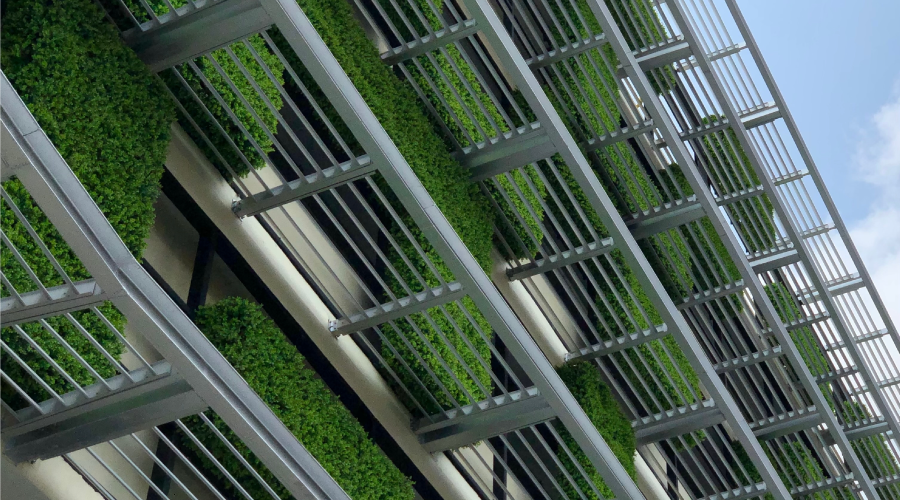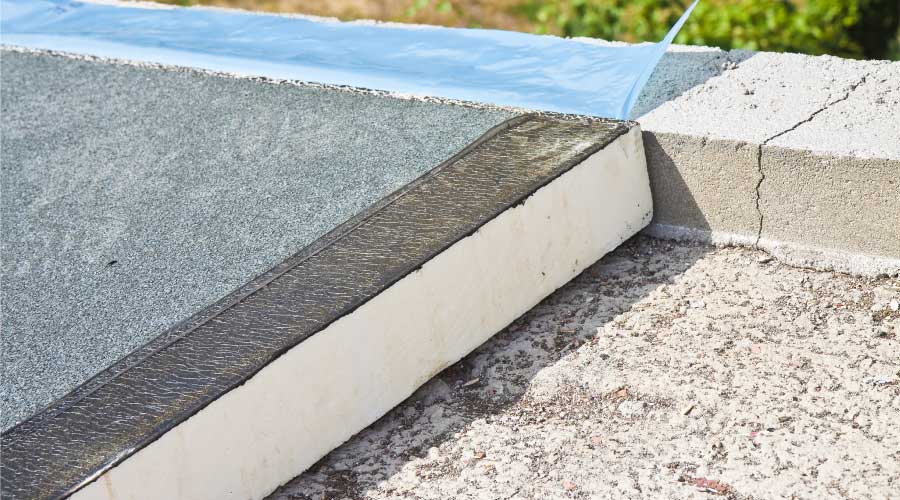LEED for Commercial Interiors Can Result In Productivity Gains, Energy Savings
Green buildings have long been called high-performance buildings in Europe and in segments of the U.S. facilities market. The idea is that, while environmental responsibility is noble, sustainable design also should support better human comfort and business results.
Experience — and related research — bears out this thinking. The U.S. Green Building Council’s LEED rating system, for example, is widely seen as a way to improve a building’s environmental profile and energy use. Yet research indicates that it improves workplace effectiveness and return on investment (ROI). A 2009 Michigan State study, Life Cycle Cost Analysis of Occupant Well-being and Productivity in LEED Offices, found that groups moving to LEED office buildings missed less work and put in almost 39 hours more per person annually. According to the study, the total bottom-line benefits from gains related to fewer allergic reactions and reduced stress. The productivity boost ranged from $69,601 to more than $250,000 per year, the study showed.
Yet there are even greater returns. Today, leading companies and institutions are using LEED for Commercial Interiors (LEED-CI) — which certifies the sustainability of tenant improvements and interior renovations — as an opportunity to transform their business cultures and even enhance their brands. Add to that gains in energy efficiency and the market value of a space, and it becomes hard to imagine not building green.
The key to linking LEED to ROI and other valuable measures of organizational effectiveness is to plan early and strategically. The experience of several leading office tenants across the country demonstrates how implementing a LEED-CI-based plan can create measurable value through green interiors. What’s more, the following six tactical solutions are surprisingly achievable and economical when LEED-CI is viewed as integral to project planning rather than as an “add-on” to interiors projects (see “Debunking LEED-CI Myths on page 28). The examples show how these organizations thought performance could be improved, why they chose LEED-CI as part of the answer, and what it has delivered.
1. Corporate brand performance. Viewed as critical to competitiveness, branding has practically become its own industry in recent years. For many organizations, environmental stewardship is seen as central to brand identity: It’s the right thing to do, for their own people and society at large. So a workplace build-out to LEED standards simply reinforces these core values.
The power plant engineering firm Sargent & Lundy saw a 2008 relocation of their Phoenix regional office as a way to symbolize their expertise and forward-thinking attitude on global energy issues. Not surprisingly, the LEED-CI Silver build-out features energy-efficient lighting and systems. But more than that, the 14,000-square-foot open environment appears collaborative and interactive, reflecting the firm’s consulting approach. Wall-free clusters of sun-drenched workstations with mobile components encourage flexibility and communication, while designated “quiet rooms” allow privacy behind closed doors. Glass, light-toned wood and stone give tactile evidence of Sargent & Lundy’s green streak.
Similarly, health care software developer Burgess Group, based in Alexandria, Va., saw LEED-CI as another way to reinforce its image as a large, stable company — both for employees and for customers. As in the case of Sargent & Lundy, corporate goals intimately connected to the company’s brand drove project decisions as much as energy efficiency or workplace comfort. The result is a statement to the outside world and to employees that resonates with the tenant’s identity and mission.
2. Human performance. Among the benefits of LEED cited in studies like the Michigan State report are direct gains in overall health for office workers. These improvements come from better indoor air quality (IAQ), increased daylighting, and other changes seen to enhance morale or reduce stress. The bottom line: Happier, healthier, more relaxed employees tend to produce better work.
This thinking informed the planning of a 68,000-square-foot headquarters for an office furniture manufacturer. The company chose to renovate its 100-year-old former window sash factory, reaffirming its commitment to the local community and business line in the process. Using exposed brick and timber with new interior construction, the company created a clean, contemporary look in flexible and open loft-like spaces. The effect on employees working in the renovated space, who report gains in output and work enjoyment, quickly validated the approach. The facility, targeting LEED-CI Silver, was designed to be “open, productive and approachable,” according to executives.
The headquarters of Burgess Group (targeting Gold certification) was installed in a well-located new building with a green roof and bicycle facilities. Glass-walled offices and open workstations allow daylight deep inside office areas. Recycled materials, low-flow fixtures and GreenGuard-certified finishes are often touted by employees of this health care software developer. Beyond pride of place, Burgess Group workers are now more effective and efficient, says the company.
3. Organizational performance. By exploiting a LEED-CI renovation as a means for strategically reconfiguring the workplace, savvy occupants have improved organizational functioning, too. In this case, the bottom-line gains go beyond productivity to measures of work satisfaction such as reduced employee turnover and improved recruitment. Anecdotal and measurable improvements to organizational effectiveness include increased interaction, reduced e-mail volume, and shorter product development cycles.
For a Microsoft sales office in Chevy Chase, Md., LEED-CI strategies were integral to designing a space that would entice road warriors to spend more time with colleagues in the home office. The interiors needed a timeless aesthetic appeal that would suit a broad demographic spectrum, from retired generals to recent college grads. Company executives say the LEED-CI features — and the label itself — have helped galvanize the team.
One furniture manufacturer’s workplace offers similar conclusions. The company’s transparency and openness is reflected in open perimeter areas, sunlit atriums and light wells, and even a glass-enclosed boardroom. Employees — called “members” — enjoy casual meeting areas and a café during the workday.
THE EVIDENCE
Debunking LEED-CI Myths
The experiences of the companies earning LEED-CI do more than show the value of LEED. They also debunk myths about green building. A few of the most pernicious:
Tenant improvements using LEED-CI cost more.
Not necessarily, say experienced facility professionals. If tenant improvement (TI) dollars are optimized to include LEED, there need not be any price difference. For its headquarters, the not-for-profit Easter Seals targeted LEED from the beginning, and earned Silver certification well within its estimated TI costs.
There’s no evidence of a connection between LEED and company performance.
Fortunately, facility managers and owners now have lots of research to back up performance claims. End-user studies and industry research by groups like Carnegie-Mellon University and the Heschong-Mahone Group have shown evidence of direct improvements in productivity among workers resulting from improved lighting, view, ventilation, and air-temperature conditions, which are central tenets of green building. These and other results bear out the connection between LEED and improved personnel and organizational results.
Green materials cost more.
That may have been true in 2003. Today, with more options than ever, materials and products for LEED jobs need be no more expensive than any others. Still, a typical TI fit-out can incur a premium of 2 to 4 percent in construction costs for LEED integration due to added planning and administrative time. This cost is typically recouped within three years — on a 10-year lease, that still leaves seven years of operational savings.
LEED adds to the project scope and schedule.
Neither is correct — unless LEED-CI certification is treated as an afterthought. When a project team starts from day one with a LEED–CI strategy, experience shows it will not require more design and construction time. One company’s 67,000-square-foot headquarters was delivered in a calendar year. The Burgess Group planned and installed 67,000 square feet of LEED-CI workplace in only nine months.
Word to the wise: Start planning as soon as possible. In fact, for maximum points and possible Platinum certification, LEED-CI should commence at building selection and during lease negotiations, as 50 percent of available points are determined during these phases.
— Rod Vickroy and Rob Moylan
|
Related Topics:












